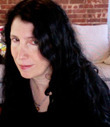Caroline Leavitt's Blog, page 50
January 1, 2016
The South in the 70s. Heartbreak. Soundtracks of our lives. The deep, twisting roots of love. Ed Tarkington talks about his incredible debut, Only Love Can Break Your Heart.
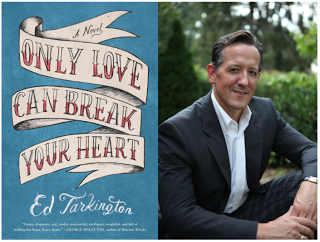
"Love can make people do terrible things." Have you ever read a better line? Ed Tarkington's written for Post Road, The Southeast Review, and elsewhere, and his fabulous debut, Only Love Can Break Your Heart, already has a starred Library Journal review, comparing him to Wiley Cash and Ron Rash, and the novel deserves all the acclaim it is garnering--and more. And here is a fun and wondrous fact (for me, anyway)--I didn't know Ed before my genius editor, Andra Miller, at Algonquin Books, gave me his book to read, sure I'd love it, and then we found out we share the same genius agent, Gail Hochman! I'm so happy to have Ed here. Thank you, Ed.
I always want to know what sparks a book--what was haunting you at the time so you knew you had to write this?
Well, to tell you the truth, I've known I was going to write this book since I was a kid. I had an older half-sister whom I really loved. She turned me on to the music that makes up the soundtrack of the novel, so to speak. Like Paul in the novel, she smoked in the house. I knew she was a bit of a bad girl. What I didn't know--what I didn't find out for several years--was that she was struggling with mental illness, which really thwarted and overtook her life and caused a lot of pain for her and everyone around her. I didn't really find out how bad things were for my sister until I was about ten, when she attempted suicide by swallowing a bottle of extra-strength Tylenol. That night was also the first time--one of only two times, as a matter of fact--that I saw my father cry. The combined effect of those events moved me profoundly. It was, for me, the origin of the urge, you might say. I understood implicitly that the only way to make sense of the emotions I was feeling would be to write about them. Still, I pushed the core conflicts and characters in this story away for a long time. I needed to find a way to distance myself from the more personal elements of the story. I also had to overcome the fear--acquired from years of mainlining Cormac McCarthy, Robert Stone, and Denis Johnson--that this material wasn't serious or edgy enough. Mercifully, I got over myself and became the writer I was meant to be from the beginning.
I loved the clear, strong indelible voice of Rocky in Only Love Can Break Your Heart. How difficult was it to find that voice and get it to live on the page--and get it to grow through the years?
Thank you. Coming from a writer I admire, your words of praise mean so much. I agree with you that voice is the key to everything in writing--what my friend and teacher Bob Shacochis calls "the music of the story's intelligence." And I think the way into the voice of this book for me came through music. I'm still a vinyl record collector, with an old Technics turntable and a Pioneer receiver and the same records I started collecting after my sister gave me The Best of the Doobies and CSNY's So Far for my sixth birthday. I turned back to that music for the mood of the novel, and the voice flowed from there.
You captured the world of the 70s perfectly. setting off a backdrop of big world events against a sleepy Southern town. How much was memory, how much imagined, and how much do you wish had been imagined?
Well, it's kind of a weird hybrid. To be honest, I don't remember that time that well. I was too young. Beyond the typical markers of time--changes in fashion, technology, etc.--it's all sort of gauzy and indistinct for me, the way I think everyone remembers the earliest years of childhood. What I do remember, very well, was how I felt when I got a little older and began to learn more about what was happening in my family when I was a happy-go-lucky kid, oblivious to the very real adult problems going on around me. I suppose I wanted to meditate on that feeling of longing, and on the process of disillusionment that we all go through as we get older and realize the world was not as it seemed when we were innocent. To me, the 70s in America was the decade of disillusionment. The shine came off of everything. Between Vietnam and Watergate, for young people, trust in the adult world was at an all-time low. The pop culture that had excited everyone in the 60s wasn't doing too great either. Instead of being fun and experimental, drugs turned mean and scary and dangerous, symbolized by the deaths of Hendrix, Janis Joplin, Jim Morrison. Elvis got fat and turned sad and embarrassing before dying in a really pathetic way. The Beatles had broken up and taken to publicly sniping at each other. After a period of very dark and drugged out brilliance, the Stones went disco. It was just terrible, you know! But it was also, I think, a much freer time for young people. Technology has really sort of put a leash on childhood. We're always on a camera somewhere, and thanks to smartphones and social media, kids are hardly ever lost or out of reach. Back in the 70s, you could still disappear, which was both thrilling and terrifying.
Tell me about the soundtrack to your novel, in particular Neil Young/
When I was a very young kid, my friends and I started identifying with these counterculture icons of so-called classic rock music. Not yet articulate enough to do it with our own words, we used rock'n'roll to make sense of our feelings. We idolized the likes of John Lennon, Neil Young, Dylan, Keith Richards, Jerry Garcia, Pete Townshend. Our music heroes legitimized our insecurities. These were all pretty masculine, sometimes swaggering dudes who nevertheless were unafraid to be emotionally vulnerable. Thanks to my half-sister, I was hooked on Neil Young early on. I think Neil became the ultimate symbol for me, because he played this terrifically furious, loud rock but also these soulful, sensitive acoustic ballads. He sang about love and heartbreak, but he also had a social conscience. He did whatever he wanted and couldn't care less what the critics had to say about it. He still does. Back then, having Neil Young on your t-shirt was a way of telling people that you didn't give a shit what they thought about you. For a troubled, vulnerable, insecure kid, Neil was like a suit of armor, in a way. I imagined Paul in the novel being like this. Paul dealt with the pain of his dysfunctional childhood by pretending to be Neil Young--or his idea, constructed from his music and his image, of what Neil Young was like. In the end, of course, you have to figure out how to be yourself--to stand on your own, so to speak, without the crutch of a borrowed persona. Both of the brothers have to learn this, in their own ways.
The relationships are like jagged edges, sometimes, and as Patricia says, “There are different ways of loving someone.” There’s love to the point of madness, accepting love, love with secrets--and without. Can you talk about this please?
In my imagination, Patricia is a person who is very much damaged by love. I think this sense of having been broken--maybe a little warped--by having their love for others betrayed or exploited is a big part of what draws Patricia and Rocky together. There's so much risk in love. Everyone has secrets, some they're keeping for better reasons than others. Sometimes love brings out the worst in us--jealousy, possessiveness, even violence. And of course, as you and I both know as parents, love for a child is both sublime and terrifying. And as our children grow older, we lose the illusion of control over their lives and have to just hope for the best, knowing that they are going to face some struggles we can't help them around.
I also love the line, “Every soul is itself.” That people have layers, and sometimes you don’t see the real person, but it’s there.
Yeah, I nicked that line from Peter Shaffer's play Equus, which figures prominently in one of the novel's subplots. I saw that play performed at the Edinburgh Fringe Festival in Scotland in the early 90s. It made a big impression on me. When I started writing this novel and was trying to imagine a means for Rocky, the narrator, to create a life for himself apart from his idolatry of his brother Paul, the play just seemed like this perfect vehicle. As I read it again, I found that line, and it really jolted me, both as a way of expressing the complexity of human character and the hard truth that we can't change the people you love. They are going to be who they are, regardless of how we feel about it, or how much it hurts us.
There are so many delicate and wonderful moments of love: when Old Man quietly tells his wife that he would never stop her using the credit cards if she left him, but he would use the trail to find her; when Leigh and Paul stand on the stage bathed in light, and most profound and moving, the very end, where you delve into the love of these two brothers. Do you think there is ever something you would NOT risk for love?
That's a tricky question. My wife would probably laugh at this--in person, I tend to come off as being a little sarcastic, and I'm probably better in writing than in real life at articulating my emotions--but I am, at heart, a pretty hopeless romantic. Now that we have children, however, everything's different. The sense of responsibility we feel to our kids outweighs everything. But that's love, too. And fortunately for me, my wife and I are still very much in love--just a more mature, less impulsive version of the same love we felt for each other when we were crazy kids, richer and deeper from the seasoning of time. Of course, there's always risk in love, but it's mostly the kind that's beyond our control. Some people try to insulate themselves or the people they love from the inevitability of pain and loss. I choose to embrace those realities as essential parts of the human experience.
What kind of writer are you? Do you outline or just wait for the pesky muse?
I have learned over the years to be very disciplined. I work in the early morning hours, five days a week, on a rigid schedule--up at 3:30 a.m., at the computer at 4, work steadily until 6:15, when it's time to get everyone up for school. On holidays, I can sleep a little later and write a little longer. I think writing fiction--at least our kind of fiction--depends on a balance of inspiration and doggedness. We live for those days when you feel as if these incredible words are just flowing off of your fingers, but I think we earn those moments by being willing to put in the long hours where you feel like all you're doing is pushing a heavy cart up a steep hill. As far as outlining goes, I do outline, but fairly loosely and with a lot of openness to change. I need to have a clear idea of where I'm going, but I also want the writing process to be one of invention and discovery. I like that feeling when the characters become fully formed enough that they seem to start making their own decisions, and I love those little 'Eureka!' moments when I'm driving around or jogging or something and a great twist of plot or a solution to a problem in the narrative just comes to me. You have to be open to that, I think.
What’s obsessing you now and why?
Well, right now, I'm pretty distracted, with the book coming out and all that involves. It's both exciting and a little frustrating, because it's hard for me to buckle down on the next novel with so many things happening for Only Love Can Break Your Heart. I guess my big obsession right now has to do with the weird shape American culture is taking as we head into the next election cycle--namely, how a pompous billionaire has somehow become the spokesperson for the disenfranchised working class. That's sort of the question I'm plumbing in my next novel: why do poor people worship the rich? It's not a new problem; Dickens wrote about it over and over again. So did George Eliot, and Wharton and James, and many others. But I'm interested in the shape that question takes in our time.
What question didn’t I ask that I should?
It's not really a question, but one of the more exciting things going on with the book has to do with a promotion Algonquin has put together with my friend Will Hoge, who is a Grammy-nominated songwriter and performer from here in Nashville. Will was one of my early readers, and has written and recorded two songs inspired by the book, and Algonquin has printed a limited run of vinyl singles with the two songs. Will is also appearing with me at the book launch in Nashville and maybe a few other dates down the road if we can work it out. The music is really amazing. Will is a phenomenal songwriter and performer, and his tunes really capture the mood and sensibility of the novel in a fresh and original way. He is also a dear friend and incredibly generous essentially to have donated his talents and reputation to help broaden the audience for this novel. We just did a joint interview yesterday for the Tennessean newspaper, and we both came to realize in that conversation with the journalist writing the piece how many similarities exist in our separate creative disciplines, and how much they complement each other. The record symbolizes the value of this relationship--and of our friendship--in a really meaningful way, I think. I feel really fortunate not only to have Will's support, but also to have the opportunity to "collaborate" with him and for us to share this experience together.
Published on January 01, 2016 09:44
December 30, 2015
Transformation. Mystery. Madness. The whole nature of reality. That's all in Carmiel Banasky's acclaimed The Suicide of Claire Bishop, from Dzanc Books
<!-- /* Font Definitions */ @font-face {font-family:"MS 明朝"; mso-font-charset:78; mso-generic-font-family:auto; mso-font-pitch:variable; mso-font-signature:-536870145 1791491579 18 0 131231 0;} @font-face {font-family:"Cambria Math"; panose-1:2 4 5 3 5 4 6 3 2 4; mso-font-charset:0; mso-generic-font-family:auto; mso-font-pitch:variable; mso-font-signature:-536870145 1107305727 0 0 415 0;} @font-face {font-family:Cambria; panose-1:2 4 5 3 5 4 6 3 2 4; mso-font-charset:0; mso-generic-font-family:auto; mso-font-pitch:variable; mso-font-signature:-536870145 1073743103 0 0 415 0;} /* Style Definitions */ p.MsoNormal, li.MsoNormal, div.MsoNormal {mso-style-unhide:no; mso-style-qformat:yes; mso-style-parent:""; margin:0in; margin-bottom:.0001pt; mso-pagination:widow-orphan; font-size:12.0pt; font-family:Cambria; mso-ascii-font-family:Cambria; mso-ascii-theme-font:minor-latin; mso-fareast-font-family:"MS 明朝"; mso-fareast-theme-font:minor-fareast; mso-hansi-font-family:Cambria; mso-hansi-theme-font:minor-latin; mso-bidi-font-family:"Times New Roman"; mso-bidi-theme-font:minor-bidi;} .MsoChpDefault {mso-style-type:export-only; mso-default-props:yes; font-family:Cambria; mso-ascii-font-family:Cambria; mso-ascii-theme-font:minor-latin; mso-fareast-font-family:"MS 明朝"; mso-fareast-theme-font:minor-fareast; mso-hansi-font-family:Cambria; mso-hansi-theme-font:minor-latin; mso-bidi-font-family:"Times New Roman"; mso-bidi-theme-font:minor-bidi;} @page WordSection1 {size:8.5in 11.0in; margin:1.0in 1.25in 1.0in 1.25in; mso-header-margin:.5in; mso-footer-margin:.5in; mso-paper-source:0;} div.WordSection1 {page:WordSection1;} </style><br /><div class="MsoNormal"><span style="font-size: small;"><span style="font-family: Arial,Helvetica,sans-serif;">Let's start with the praise--and I agree with all of it:</span></span><br /><br /><div class="font_8" style="line-height: normal;"><span style="font-family: Arial,Helvetica,sans-serif; font-size: small;"><span style="line-height: normal;"><span style="text-align: justify;">"<span style="font-weight: bold;">Banasky’s memorable, intricate, and inventive debut novel uses vulnerable characters to probe themes of time, identity, perception, and love.</span> In 1959 Manhattan, Freddie Bishop commissions an artist known only as Nicolette to paint a portrait of his wife, Claire. Unexpectedly, the finished work depicts fragmentary moments in Claire’s life, ending with a leap off the Brooklyn Bridge. Despite Nicolette’s reassurance that the painting will protect her from the fate it depicts, Claire—fearful of her family’s history of mental instability—attempts unsuccessfully to destroy it. When schizophrenic West Butler sees the painting in a gallery in 2004, he becomes convinced that it is the work of his artist ex-girlfriend, also named Nicolette. Spiraling into a delusion of conspiracy and time travel that explains her disappearance from his life and the contradiction in dates, West concludes that the canvas can change reality as well as help him find Nicolette. In the course of stealing it, he meets a man with knowledge of the painting’s past, setting up an encounter between him and Claire that will have transformative effects on both. With its dancing time frames, recurring motifs, glimpses of history, and shifting realities, all <span style="font-weight: bold;">united by striking prose, the novel is both an intellectual tour de force and a moving reflection on the ways we try to save ourselves and others.</span>" </span></span></span></div><span style="font-family: Arial,Helvetica,sans-serif; font-size: small;"> </span><br /><div class="font_8" style="line-height: normal;"><span style="font-family: Arial,Helvetica,sans-serif; font-size: small;"><span style="line-height: normal;">—<span style="text-align: justify;">Publishers Weekly, starred review</span></span></span></div><br /><br /><br /><div class="separator" style="clear: both; text-align: center;"><a href="http://3.bp.blogspot.com/-FfklD0VPhhs..." imageanchor="1" style="margin-left: 1em; margin-right: 1em;"><img border="0" height="224" src="http://3.bp.blogspot.com/-FfklD0VPhhs..." width="320" /></a></div><br /><div class="separator" style="clear: both; text-align: center;"><a href="http://4.bp.blogspot.com/-87COPQuTe4c..." imageanchor="1" style="margin-left: 1em; margin-right: 1em;"><img border="0" height="320" src="http://4.bp.blogspot.com/-87COPQuTe4c..." width="213" /></a></div><br /><br /><br /><span style="font-size: small;"><span style="font-family: Arial,Helvetica,sans-serif;"> <span class="color_15">Carmiel Banasky is a writer, editor, and teacher from Portland, OR. Her work has appeared in Glimmer Train, PEN America, American Short Fiction, Slice, Guernica, The Rumpus, and on NPR, among other places. She earned her BA from the University of Arizona and her MFA from Hunter College, where she taught Undergraduate Creative Writing. She is the recipient of awards and fellowships from Bread Loaf, Ucross, Ragdale, Artist Trust, I-Park, VCCA, Santa Fe Art Institute, and other foundations. She's tried her hand at grassroots organizing while living in Mississippi, and studied for a year in London. After four years on the road at writing residencies, she now resides in Los Angeles and teaches with <span style="text-decoration: underline;"><a href="http://www.lawritersgroup.com/" target="_blank">LA Writers Group</a></span>.</span></span></span><br /><br /><br /><br /><span style="font-family: Arial,Helvetica,sans-serif;"><span style="font-size: small;"><b>I always believe that something is haunting the writer before he or she begins to write a novel. What sparked the writing of The Suicide of Claire Bishop?</b></span></span></div><div class="MsoNormal"><span style="font-family: Arial,Helvetica,sans-serif;"><span style="font-size: xx-small; mso-tab-count: 1;"> </span><span style="font-size: small;"><br />Years before I started writing my novel, two friends (from different places in my life) were diagnosed with schizophrenia. They told me about their episodes in great detail; they told me about their fears and how alienated they sometimes felt around old friends. I had never read about these experiences in fiction—at least not as they described them. I had also never read in literature an experience like my own uneasy reaction, the fear that bubbled up in relation to mental illness. Madness and the fragility of our brains became, yes, a haunting. I knew I would write about it someday. When the characters of West and Claire came to me, I knew I had a novel to write. I knew that this was the material I would stick with no matter how long it took. This was the big-I Important to me. So I asked permission to use my friends’ experiences as fodder, and set to work.</span></span></div><div class="MsoNormal"><span style="font-family: Arial,Helvetica,sans-serif;"><span style="font-size: small;"><br /></span></span></div><div class="MsoNormal"><span style="font-family: Arial,Helvetica,sans-serif;"><span style="font-size: small;"><b>I deeply admired the shifting structure of the book, moving from 1959 Greenwich Village to 2004 New York, from a housewife sitting for a portrait to the inner life of a schizophrenic obsessed with finding a lost lover.<span style="mso-spacerun: yes;"> </span>So this brings us to the question of how do you write? Do you plan things out (which, of course, will be revised) or do you simply write and then make sense of your pages when you are finished? Do you have rituals or routines?</b></span></span></div><div class="MsoNormal"><span style="font-family: Arial,Helvetica,sans-serif;"><span style="font-size: xx-small; mso-tab-count: 1;"> </span><span style="font-size: small;"><br />First, I make a big, quick mess of things. Then, for the next several years, I try to clean up that mess. I knew the beginning and end soon after I started drafting. I knew that my characters would start at point A and would end up at point B—I just didn’t know how they would get there. I didn’t outline or plot out first. I wrote to find the story. After I had written a couple drafts, I could take a step back and see the larger picture; I could see where I needed to fill out Claire’s arc, where she needed to develop (i.e. I wrote the 1968 section in a later draft), and I could see where I had overwritten, or where two sections were doing the same work. Early drafts had West in a hospital for a hundred pages, which I later excised because he couldn’t do anything, and therefore change in the way I knew he had to, while in that setting. </span></span></div><div class="MsoNormal"><span style="font-family: Arial,Helvetica,sans-serif;"><span style="font-size: xx-small; mso-tab-count: 1;"> </span><span style="font-size: small;">The hardest part about writing without an outline was discovering West’s logic. West, who has schizophrenia, is on a mission to find Nicolette, his ex-girlfriend who is either missing, due to some malicious plot involving Hasidim, or is avoiding him. He creates the mystery he is trying to solve. Everywhere around him are clues, which he stitches together—but within that mad story is very sound logic. After I had written a few drafts, I had to go back and make sense of the mystery element. I had to build a puzzle from the pieces I had created—which was very hard work. But even with this hindsight, I wouldn’t go back and change my process because, in a way, I ended up writing West in a fashion reflective of how West’s mind works.</span></span></div><div class="MsoNormal"><span style="font-family: Arial,Helvetica,sans-serif;"><span style="font-size: small;"><br /></span></span></div><div class="MsoNormal"><span style="font-family: Arial,Helvetica,sans-serif;"><span style="font-size: small;"><b>I want to mention a wonderful line line from an advance review I read of your book—“don’t expect peace of mind.” To me, that is the highest praise. I think books should unsettle us and make us rethink everything about our lives.<span style="mso-spacerun: yes;"> </span>Can you talk about this please?</b></span></span></div><div class="MsoNormal"><span style="font-family: Arial,Helvetica,sans-serif;"><span style="font-size: xx-small; mso-tab-count: 1;"> </span><span style="font-size: small;"> </span></span><br /><span style="font-family: Arial,Helvetica,sans-serif;"><span style="font-size: small;">One of the reasons for I wrote this book was to get readers to invest, to find solace, and to recognize themselves in West, whether or not they have had experience with mental illness. And I wanted that recognition to be uncomfortable. There is only a thin line between sanity and insanity. West, who in many ways is defined by (at least in the eyes of others) by his insanity, and Claire, who defines herself by her sanity, are not so different from one another. That is also why I chose to write in first person for West—to get the reader as close to his point of view as possible, and to not let them leave. </span></span></div><div class="MsoNormal"><span style="font-family: Arial,Helvetica,sans-serif;"><span style="font-size: small;"><br /></span></span></div><div class="MsoNormal"><span style="font-family: Arial,Helvetica,sans-serif;"><span style="font-size: small;"><b>A painting is the thread that ties everything together, so I want to ask you, how true is art to life? If we are lost in an experience of a book or a painting, or we are lost in a real relationship with a real person, does the mind know the difference?</b></span></span></div><div class="MsoNormal"><span style="font-family: Arial,Helvetica,sans-serif;"><span style="font-size: xx-small; mso-tab-count: 1;"> </span><span style="font-size: small;"><br />West would say that remembering an event is pretty similar to the actual experience of it: the same synapses fire in the brain. This also opens up questions of empathy—can we imagine another’s experience so deeply that we can truly know what it’s like? Some brain imaging experiments point to yes. So perhaps no, on a very fundamental level, the brain doesn’t know the difference. And getting lost in a relationship with a real person, like you mentioned, is not so dissimilar from getting lost in a book: the vortex and pull of someone else’s story. </span></span></div><div class="MsoNormal"><span style="font-family: Arial,Helvetica,sans-serif;"><span style="font-size: xx-small; mso-tab-count: 1;"> </span><span style="font-size: small;"><br />But while the mind might no know the difference, does the body? I am never much in my body—I live a fairly cerebral existence (writing, reading), but I wish I moved more. I live so much of my life inside of my own or others’ art. But it’s always on my to-do list to exercise and use my body more, in order to address, perhaps, something I sometimes have a hard time with (the head-in-the-clouds-writer-syndrome): being fully in the present moment. I talk to my students about the importance of “grounding” a reader in a scene with “concrete details.” But can one really feel “grounded” there like one can when hiking or dancing or running? Then again, there is the “runner’s high,” which lifts you out of your body through the very use of it. I probably didn’t answer your question at all, but these are fun tangents and associations to explore. </span></span></div><div class="MsoNormal"><span style="font-family: Arial,Helvetica,sans-serif;"><span style="font-size: small;"><br /></span></span></div><div class="MsoNormal"><span style="font-family: Arial,Helvetica,sans-serif;"><span style="font-size: small;"><b>There is a suicidal housewife and a schizophrenic in your novel, which lends itself to an exploration of the way reality moves and changes. Actually, quantum physics says there is no time, that everything is happening all at once and that eventually time will stop. But if there is no time—if realty can shift—how then, do we live our lives in the best way possible?</b></span></span></div><div class="MsoNormal"><span style="font-family: Arial,Helvetica,sans-serif;"><span style="font-size: small;">This is such a good question—and one I ask myself all the time. I think it’s similar to the other plaguing question: if there is no free will, as many physicists claim, do we simply live as if there is free will because we know no other way? Even if quantum physics says our notion of time is completely false, we still have to live in the world, in society, within the boundaries of linear time. But if there is no time as we define it, if everything is happening all at once and everyone is connected, then what better way to live than with that in mind? I think it’s a beautiful notion because it invites empathy. Time, in our linear definition, is the great separator: it separates people from one another, just as it separates events. But if we are not as separate as we think, if, like in West’s perception of the world, we don’t necessarily start and end where our bodies seem to, then there is much more room for understanding and love. (Not to get all woo-woo…) In that version of the story, I am not different from you. Meditation gets me closer to that in a bodily way, while writing gets me closer to that in a cerebral way.</span></span></div><div class="MsoNormal"><span style="font-family: Arial,Helvetica,sans-serif;"><span style="font-size: small;"><br /></span></span></div><div class="MsoNormal"><span style="font-family: Arial,Helvetica,sans-serif;"><span style="font-size: small;"><b>What’s obsessing you now and why?</b></span></span></div><div class="MsoNormal"><span style="font-family: Arial,Helvetica,sans-serif;"><span style="font-size: xx-small; mso-tab-count: 1;"> </span><span style="font-size: small;"><br />Oh, probably the same things as ever. I’m interested in exploring friendship, family, and how grief manifests within those relationships. Suicide is still a question in my writing that characters face from all sides of the issue—our different cultural notions of it, the repercussions, the universality, etc.</span></span></div><div class="MsoNormal"><span style="font-family: Arial,Helvetica,sans-serif;"><span style="font-size: small;"><b><br /></b></span></span></div><div class="MsoNormal"><span style="font-family: Arial,Helvetica,sans-serif;"><span style="font-size: small;"><b>What question didn’t I ask that I should have?</b></span></span></div><div class="MsoNormal"><span style="font-family: Arial,Helvetica,sans-serif;"><span style="font-size: xx-small; mso-tab-count: 1;"> </span></span><br /><span style="font-family: Arial,Helvetica,sans-serif;"><span style="font-size: xx-small; mso-tab-count: 1;"> </span><span style="font-size: small;">I just want to share one last thing, which has come up for me recently while talking with readers, and which I noticed a couple questions ago. Most people don’t know this, and I didn’t know until I started reading up on it: I try not to use the word “schizophrenic.” Someone has schizophrenia vs. someone is schizophrenic. West’s schizophrenia is a part of him, but it isn’t him. No high horse anywhere around here: I still stumble in my own writing and speech with this. But I have tried to make sure copy about the book holds to this rule, and I thought I might share this lesson here.</span></span></div>
Published on December 30, 2015 13:37
R. D. Vincent talks about being a Pulpwood Queens bookclub selection, The World of Donbridge, why stories matter, and so much more
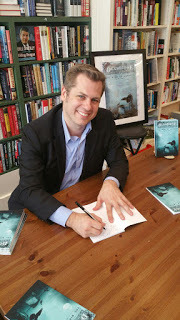
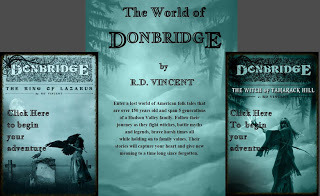
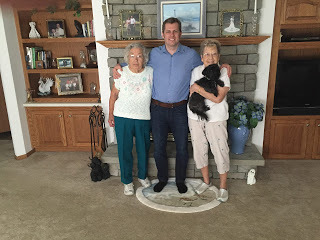
Who doesn't have--and love--family stories? R. D. Vincent began collecting those passed down in his family, resulting in a book that's both magical and mystical--and a January Pulpwood Queens Bookclub Selection! I am honored to host Ray here. Thank you, Ray!
I always want to know what sparks a book--what was haunting you at the time so you knew you had to write these?
Well, about 15 years ago I started writing these stories down from my Grandmother who is on my father's side of the family. Each year I would start writing one and then something would happen during those 15 years. On one occasion, which lasted nearly 6 years, I became an elected official for my home town in Middletown, New York. On a second occasion, I fell in love and got married and as a result another 4 years went by. One day, while out speaking with a friend, he asked me, "What are these books you are always talking about? Are you ever going to publish one?" I paused for a moment and realized I had been putting it off for far too long. I told him "I think I just put it aside as my life was starting to become complete when I arrived in Texas." He then said to me, "Well if you are ever going to finish those books of yours, you are going to need a reason." It was at that moment that I thought to myself about my Grandmother and how old she was getting and how much I wanted her stories to be real and for the world to read them and for her to see them while she was alive. With that I resurrected my book writing and finished the first story in a month. The second one in two months and the third one, well that will be released January 6, 2016. It’s funny when I think back, my Grandmother asked me this same question, and I told her "I wanted to do this for you Grandma" and frankly when I told her this, I was choked up about it.
What I love so much about this collection is that they are stories that were handed down through 5 generations and are nearly 150 years old! I wanted to ask, do the stories ever change--with the times or with the storyteller?
Over the years there have been 5 different story tellers of these tales starting with my Great Great Great Grandmother and then finally to me. When I heard these tales, some of them were scattered and torn apart. So I took each tale, built a town around them, and like a patchwork quilt brought them all together in this place I so named Donbridge. Many of these stories happened in my family, but some things I have added to develop the stories further. Its very interesting that the Witch of Tamarack Hill was a real person who actually predicted the future in my ancestors home town. Many people were so bothered by her they actually hunted her down, the real witch that is, and hung her in the cemetery in an old tree. The tree is still there to this day.
Both these stories rely on folklore and myth. Why do you think these are even more important in our society today?
The simple action of storytelling amongst family members has become lost to a world of Video Games, Horrific News Stories, Reality TV, Scattered Families and this endless quest to tear each other down. These stories give Hope, Family, Loyalty and Belief that I feel is much needed in our world today. The Roman Arena Is coming back and developing a world in which our future generations think and believe is the way they should act and as such creating a new normal. They have no idea what happened in our world to get us to where we are today. The measure of past generations sacrifices; sacrifices that real people made to build our future, are lost. Many people have forgotten or just do not know about the past and many, even though it may be on the Internet, would not even really know what to begin searching for. So are these stories important to our society, absolutely.
What kind of writer are you? Do you outline or just wait for the pesky muse?
I have been asked this question and I tend to smile because, aside from a white board and an outline, I really just sit at the computer and begin typing. But I will tell you the outline changes daily. Being a thinker that never stops thinking, I am always at the computer typing in my mind and reworking stories and thinking up new ideas. For me it’s exciting and when I have an idea and no computer, I writing ideas on restaurant receipts, napkins, scraps of papers, envelops and taping them to something. Best thing I can suggest to anyone, "Don't rely on your memory and believe that you will remember your idea hours later the same way you thought of it, it's not gonna happen!" Bottom line, for me anyway, I think I need a notebook.
What’s obsessing you now and why?
Lately, I have been working out the details about my next book series which is very different from the Donbridge Series. It’s a three book series called Smith Corporation and it follows a young boy by the name of Schalion T. Sacula who finds out there is no Santa Claus and what he does about it. I also have a book of collected fables that I have created and that too will be out next year. What question didn’t I ask that I should?
No question really, Just thank you to you and to everyone who have read my books and enjoyed them. I am excited about being a featured author at the Pulpwood Queen Girlfriend Weekend January 2016 and I am looking forward to meeting many of the folks that read my stories.
Published on December 30, 2015 13:28
December 20, 2015
Story Structure for the Novel: Or, Why I love John Truby and Leslie Lehr, Part 19
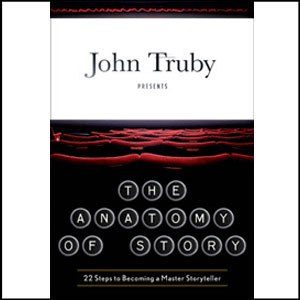
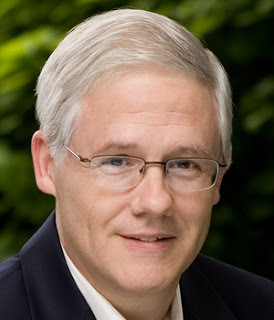
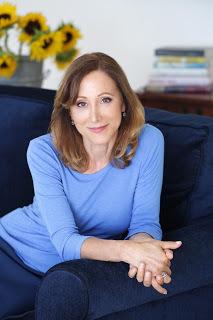
A lot of novelists shut down when I mention structure. Writing should be done from the seat of your pants. No surprises for the writer, no surprises for the reader. . You should listen to the muse. You should write out 500 bad pages and then see what the story is, discovering it only after you are finished. Of course there are writers who can and do write that way—and beautifully, but I suspect they have an intrinsic and even subconscious ability to craft a story. Or they don’t, and those 500 pages languish in the bottom drawer of a desk.
I used to not believe in structure. I wrote and wrote and wrote and usually ended up with 800 pages and no idea of what the story was about. Then one of my students at UCLA told me about John Truby and how he was this great story guru, and because I was curious, I got his book. I was sure it wasn’t going to help me, but instead, it did more than help. It changed my life. It made me begin to see structure under the story, to think about moral choices and psychological needs. I began to see how the ghost (the thing that haunts the character and infuses his or her choices) could amplify the themes of my novel. The method is all about a moral understanding of the world, your characters and your self.
Ah. I was in love.
You’ve all heard me go on and on about how much I love John Truby and his story structure. The first time I Trubyized a novel, I had a New York Times Bestseller. The second time, too! What Truby does that other story structure people don’t do is think about the moral tissue of the novel. This adds grandeur and complexity, and it really turns a good novel into a great one. Well, now he and his wife, the novelist Leslie Lehr (who also does manuscripts consults for the Truby Writers Studio), have an audio class in Story Structure for the Novel.
Of course I bought it. And listened. And took notes. And was changed yet again. Truby and Lehr all about "reaching for greatness," being ambitious and writing something that will change your life.
You can order John Truby’s The Anatomy of Story, which is in paperback, anywhere books are sold. And you can purchase and download the novel class here.
Don't you want to change your life?
Published on December 20, 2015 14:28
December 14, 2015
James Lough and Alex Stein talk about the incredibly gift-worthy SHORT FLIGHTS: 32 Modern Writers Share Aphorisms of Insight, Imagination, and Wit
<!-- /* Font Definitions */ @font-face {font-family:"MS 明朝"; mso-font-charset:78; mso-generic-font-family:auto; mso-font-pitch:variable; mso-font-signature:-536870145 1791491579 18 0 131231 0;} @font-face {font-family:"Cambria Math"; panose-1:2 4 5 3 5 4 6 3 2 4; mso-font-charset:0; mso-generic-font-family:auto; mso-font-pitch:variable; mso-font-signature:-536870145 1107305727 0 0 415 0;} @font-face {font-family:Cambria; panose-1:2 4 5 3 5 4 6 3 2 4; mso-font-charset:0; mso-generic-font-family:auto; mso-font-pitch:variable; mso-font-signature:-536870145 1073743103 0 0 415 0;} /* Style Definitions */ p.MsoNormal, li.MsoNormal, div.MsoNormal {mso-style-unhide:no; mso-style-qformat:yes; mso-style-parent:""; margin:0in; margin-bottom:.0001pt; mso-pagination:widow-orphan; font-size:12.0pt; font-family:Cambria; mso-ascii-font-family:Cambria; mso-ascii-theme-font:minor-latin; mso-fareast-font-family:"MS 明朝"; mso-fareast-theme-font:minor-fareast; mso-hansi-font-family:Cambria; mso-hansi-theme-font:minor-latin; mso-bidi-font-family:"Times New Roman"; mso-bidi-theme-font:minor-bidi;} .MsoChpDefault {mso-style-type:export-only; mso-default-props:yes; font-family:Cambria; mso-ascii-font-family:Cambria; mso-ascii-theme-font:minor-latin; mso-fareast-font-family:"MS 明朝"; mso-fareast-theme-font:minor-fareast; mso-hansi-font-family:Cambria; mso-hansi-theme-font:minor-latin; mso-bidi-font-family:"Times New Roman"; mso-bidi-theme-font:minor-bidi;} @page WordSection1 {size:8.5in 11.0in; margin:1.0in 1.25in 1.0in 1.25in; mso-header-margin:.5in; mso-footer-margin:.5in; mso-paper-source:0;} div.WordSection1 {page:WordSection1;} </style><br /><div class="MsoNormal"><br /></div><br /><div class="separator" style="clear: both; text-align: center;"><a href="http://4.bp.blogspot.com/-7XUNccIB028..." imageanchor="1" style="margin-left: 1em; margin-right: 1em;"><img border="0" height="320" src="http://4.bp.blogspot.com/-7XUNccIB028..." width="213" /></a></div><div class="MsoNormal"><br /><i>Looking for the perfect holiday gift? I love Short Flights: 32 Writers Share Aphorisms of Insight, Imagination, and Wit. So of course I corralled the editors and interviewed them! And one of the authors, Yahia Lababidi gave me his favorite saying from Rumi: What you seek is seeking you. <br /><br />Thank you so much James Lough and Alex Stein!</i></div><div class="MsoNormal"><br /></div><b>Where did you come up with the idea for this absolutely delightful book? </b><br /><div class="MsoNormal"><br /></div><div class="MsoNormal">It was Alex’s idea, but I jumped on it so quickly I’m happy to take credit for it. He and I agreed that it would be a natural, a quick sell, a fait accompli. Six years later, it was. It finally occurred to me to approach my own publisher, Tim Schaffner, he liked it instantly.</div><div class="MsoNormal"><br /></div><b> </b><br /><div class="MsoNormal"><b> I imagine it was lots of fun curating all the aphorisms. How did you choose the writers and the aphorisms? And which are your favorite and why?<span style="mso-spacerun: yes;"> </span>How did you decide how to order the</b>m? </div><div class="MsoNormal"><br /></div><div class="MsoNormal">It was fun indeed curating the aphorisms. Alex and I both read all of them independently, noted our favorites, then compared our notes. More often than not, we found that we chose the same ones. But if one of us chose an aphorism the other didn’t choose, we’d try to show the other how good it was, and why, but each of us had the power to veto the other’s choice. We only came to blows once, which is pretty good for a couple of struggling aphorists.</div><div class="MsoNormal"><span style="mso-tab-count: 1;"> </span><br />Choosing favorites from the book is like parents choosing their favorite children, but here are a few, and the reasons I like them: </div><div class="MsoNormal">The first abuse of power is not knowing that you have it.</div><div class="MsoNormal"><span style="mso-tab-count: 1;"> </span>-- James Richardson</div><div class="MsoNormal"><br /></div><div class="MsoNormal">I think Richardson’s is sharply relevant in today’s political and economic climate. The next one I like for its lyric charm and wisdom:</div><div class="MsoNormal">-- As the crow flies, it simplifies.</div><div class="MsoNormal">Anne Lauinger</div><div class="MsoNormal">This one for its blunt realism:</div><div class="MsoNormal">Much can be tolerated by condemning it.</div><div class="MsoNormal">--Stephen Carter</div><div class="MsoNormal"><br /></div><div class="MsoNormal">And this one because it’s darned funny:</div><div class="MsoNormal">I never judge other mothers, even when they’re doing everything wrong.</div><div class="MsoNormal"><span style="mso-tab-count: 6;"> </span>-- Sara Levine</div><div class="MsoNormal"><br /></div><div class="MsoNormal"><b>Why do you think aphorisms are so important to us? (You’ve called them “A little window with a big view”, which I love.</b></div><div class="MsoNormal"><br /></div><div class="MsoNormal">They’ve delighted most of us since we were young enough to understand them, so our own emotional attachment to aphoristic sayings runs deep. A short line of words has helped fortify many of us through challenging times. Who hasn’t used What doesn’t kill me makes me stronger at least once in their lives?</div><div class="MsoNormal">Follow that one up with What does not kill me can hurt me pretty badly, and you have another appeal of the aphorism – they can be subversive and dark. Like jokes, they can express our unconscious, our shadow sides. Aphorisms don’t always recite the pieties of our societies, but can cut hard across them. Who doesn’t feel a whoosh of relief when someone says out loud what everyone else was thinking? </div><div class="MsoNormal"><br /></div><div class="MsoNormal"><b>There’s “inspiration, wisdom and wit” in these, which of course, makes it the perfect gift--but expressing something true in a form that we remember--can, I think, actually change us. Do you agree?</b></div><div class="MsoNormal">Apparently a study has shown that the short sayings most easily remembered are short sayings that rhyme. Early to bed, early to rise… Though Short Flights does include a few rhyming aphorisms, there aren’t many. But most have one thing in common – they startle us. The reader is startled by a clever piece of word play, or by an abrupt reversal in meaning, or some kind of twist. Or even the aphorism’s idea, or message, can be so unexpected, so counterintuitive, and yet so true, that the force of the idea itself startles us: </div><div class="MsoNormal">Prisons are built with stones of Law, Brothels with bricks of Religion. </div><div class="MsoNormal">– William Blake</div><div class="MsoNormal">I have a theory that little startles can actually change us in a rather subtle way with bit ramifications. I read a book by a literary critic who studied how medieval monks in England and Ireland used riddles. His theory was that a riddle’s surprising answer startles us in a way that mimics, in a small way, a spiritual epiphany. The riddle’s puzzling mystery throws a wrench in the gears of discursive thinking and suspends us an in open, expectant state of unknowing. Then the answer, or the aphorism, shoots a dart of information and imagery into our awareness. There’s something about being surprised and informed at the same time that people like. </div><div class="MsoNormal">Maybe being thrown open for a second, like a tossed ball suspended in air, allows us to grow a little bit, to expand our sphere of awareness. And reading a bunch of aphorisms one after another, forces us to acknowledge a multitude of (disorienting) perspectives on a multitude of topics. That can change you pretty fast. It’s fun to pit two contradictory aphorisms against each other:</div><div class="MsoNormal">Absence makes the heart grow fonder.</div><div class="MsoNormal">Out of sight, out of mind.</div><div class="MsoNormal"><br /></div><div class="MsoNormal">Two statements making opposite claims, both true at times, nothing absolute about them. It’s hard to think in black and white once you’ve watched the wise ones disagree. </div><div class="MsoNormal"><br /></div><div class="MsoNormal"><b>What’s obsessing you now and why?
</b><br /><br />Alex and I think it may be time to update Ambrose Bierce’s Devil’s Dictionary.
</div><div class="MsoNormal"><br /></div><b> </b><br /><div class="MsoNormal"><b>What question didn’t I ask that I should have?<br /></b></div><div class="MsoNormal">One fun discovery for me was how much of a writer’s personality can be packed into these little messages in a bottle. Read enough of them by one person and you see a distinct voice, attitude, and perspective begin to emerge. You recognize an Ashleigh Brilliant, because it’s sly and ingenuous and usually paradoxical. Contrast this with Charles Simic’s surreal, eastern European feel, or Tom Farber’s world-weary not-quite cynicism. And yet you’ve just read a few little pieces of language by them. </div>
Published on December 14, 2015 16:51
Women of the wild west come to blazing life in Lesley Poling-Kempes' extraordinary Ladies of the Canyons: A League of Extraordinary Women and Their Adventures in the American Southwest.

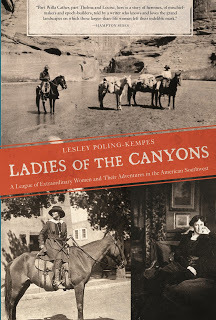
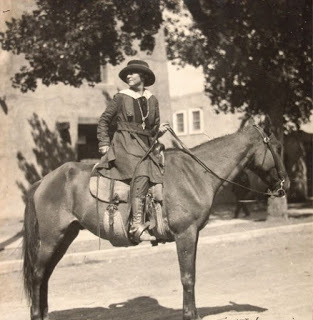
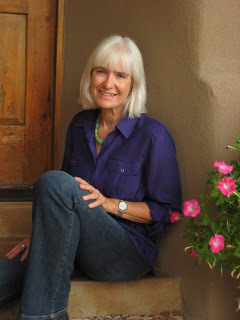
First, are the rave reviews:
“Considered spinsters back East, both Curtis and Stanley married younger men out West. Curtis wed Paul Burlin, a promising painter (her Greenwich Village mother disapproved of his Jewishness); Stanley eloped with a cowboy. It would be nice to freeze-frame here, with everyone getting what they wanted, freedom and fulfillment and happiness. But time rides on, some must leave the desert forever, and fortunes are lost . . . Poling-Kempes has done an admirable job scouring archives for these women, who have been largely left out of the historical record of the West. It's a kind of prequel to our common history of the Southwest, peopled by women with long skirts and cinched waists in the desert heat, riding cowboy style, trying to do right by the land they all loved.” Carolyn Kellogg, Los Angeles Times
“Part Willa Cather, part Thelma and Louise here is a story of heroines, of mischief-makers and epic-builders told by a writer who knows and loves the grand landscapes on which these larger-than-life women left their indelible mark.” Hampton Sides (In the Kingdom of Ice; Blood and Thunder)
Ladies of the Canyon is an astonishing look into lives lived well, with courage and a sense of destiny, too. Lesley is the recipient of the 2014 Willa Literary Award for Contemporary Fiction for her novel Bone Horses. She is also the author of Canyon of Remembering, Valley of Shining Stone: The Story of Abiquiu, The Harvey Girls: Women who Opened the west, Ghost Ranch, and is the winner of the 2005 Independent PUblisher Book Awards for Georgia O'Keefee & New Mexico
I'm honored to host author Lesley Poling-Kempes here. Thank you Lesley!
How did you come up with the idea for this book?
I began to think about this book more than ten years ago. I was writing and researching a book about Ghost Ranch. Everyone knows that Ghost Ranch was the beloved home of American painter Georgia O’Keeffe. What no one knew was that Ghost Ranch was created, even named, by a woman from Boston, Carol Bishop Stanley, a fifty-something-year-old divorcee who in 1931 bravely moved into a dilapidated homestead in a remote New Mexico canyon once inhabited by outlaws. The challenges she faced as a single woman in the outback of the Colorado Plateau are impossible to overstate. Without Stanley’s bold choice to build a guest ranch on the high desert north of Abiquiu, O’Keeffe’s life and work at Ghost Ranch would never have happened. I was curious about this educated woman from Boston who had gone missing in history.
Stanley actually arrived in the Southwest in 1915. Her story began on the tiny island of Nahant in Massachusetts Bay in the 1870s and expanded across the United States and to Europe in the stories of her extraordinary group of women friends who came into the American Southwest in the first decades of the 20th century. My book grew to be the story of four remarkable women – Natalie Curtis of Greenwich Village, Alice Klauber of San Diego, Mary Cabot Wheelwright of Beacon Hill Boston, and Carol Stanley. Each of them, and their circle of friends, left lasting legacies in the American West. They would never have referred to themselves as emancipated “New Women” but in fact, their lives blazed a trail for generations of women and men to follow.
Natalie Curtis left her family’s home on Washington Square in 1903 and with her brother moved to California. A classically educated and accomplished concert pianist, after traveling through Indian Country Natalie’s self–appointed task became the recording and preserving of Native American music. President Theodore Roosevelt sanctioned Natalie’s work and made her an unofficial advisor regarding Indian affairs. Roosevelt wrote an introduction to Curtis’s “The Indians’ Book” published in 1907. Their friendship lasted two decades and included a horseback expedition rendezvous at the Hopi Snake Dance (reminiscent of a Zane Grey novel) at the pueblo of Walpi in the summer of 1913.
Boston Brahmin Mary Cabot Wheelwright came to the Southwest in her 40s after her parents died and found her life’s purpose. Wheelwright won the trust of the great Navajo medicine man Hostiin Klah and spent a decade recording his vast knowledge of Navajo chants, stories and sacred rituals. Their collection became the foundation of the Wheelwright Museum of the American Indian in Santa Fe.
California native Alice Klauber came to Santa Fe with Curtis and Stanley in 1916. A painter who traveled Europe with Robert Henri and William Merritt Chase, Klauber was childhood friends with Gertrude Stein and frequented Stein and her brother Leo’s salon in Paris before World War One. Klauber introduced European and American modern art to Southern California when she and Henri curated the opening exhibition at Balboa Park in 1915.
What surprised you most in the course of your research?
I was surprised that these adventurous, creative, boundary-pushing women who had contributed so much to the art and music communities of the American West, who had introduced Anglo America to Native America, who had forged their way into the frontier of the modern age, could be so unknown. Forgotten. Of course, women in their time – 1900 until the 1930s – did not seek nor expect recognition for their accomplishments beyond the home. I really oughtn’t to have been surprised. Only headliners like O’Keeffe and Mabel Dodge Luhan have name recognition in the Southwest. O’Keeffe and Luhan believed they were special – and they were – and they made sure everyone else knew they were special, too.
The women in my book did not think of themselves as extraordinary although they likely would have admitted to a restless curiosity about the world and themselves that was not befitting of a proper Victorian woman. Each had to create a new image of themselves as a woman in the exotic landscape of the American West. As I wrote in the book’s prologue, theirs is the story of New Women stepping bravely into the New World, of Anglo America waking up to Native America, of inconspicuous success and ambitious failure.
“I just plain love these women. I want to go riding with them; I want to learn from them; I want to sit under the stars with them for just one night - please? There were misadventures, hardships and tragedies in their lives, but I won't be the spoiler here. Read the book to find out about the poker game, the alcoholism, the accident. But you also will learn about the hard work these women put into their new lives and the respect they shared for this wide-open world and its people.” Laura Tolley, Houston Chronicle
Laura Tolley’s comments are echoed by women – and men – at every reading and book event I have done this fall. The true life victories and defeats of these ladies of the canyons seem to resonate in our times, perhaps because we as a society still lack stories of strong resilient women, and seek role models from the past to affirm our own journeys toward creative and person independenc
Published on December 14, 2015 16:47
Tattoo as tribute: Susan Salluce explores the relationship between grief and tattoo in the astonishing photo-filled GriefINK
<!-- /* Font Definitions */ @font-face {font-family:"MS 明朝"; mso-font-charset:78; mso-generic-font-family:auto; mso-font-pitch:variable; mso-font-signature:-536870145 1791491579 18 0 131231 0;} @font-face {font-family:"Cambria Math"; panose-1:2 4 5 3 5 4 6 3 2 4; mso-font-charset:0; mso-generic-font-family:auto; mso-font-pitch:variable; mso-font-signature:-536870145 1107305727 0 0 415 0;} @font-face {font-family:Cambria; panose-1:2 4 5 3 5 4 6 3 2 4; mso-font-charset:0; mso-generic-font-family:auto; mso-font-pitch:variable; mso-font-signature:-536870145 1073743103 0 0 415 0;} /* Style Definitions */ p.MsoNormal, li.MsoNormal, div.MsoNormal {mso-style-unhide:no; mso-style-qformat:yes; mso-style-parent:""; margin:0in; margin-bottom:.0001pt; mso-pagination:widow-orphan; font-size:12.0pt; font-family:Cambria; mso-ascii-font-family:Cambria; mso-ascii-theme-font:minor-latin; mso-fareast-font-family:"MS 明朝"; mso-fareast-theme-font:minor-fareast; mso-hansi-font-family:Cambria; mso-hansi-theme-font:minor-latin; mso-bidi-font-family:"Times New Roman"; mso-bidi-theme-font:minor-bidi;} .MsoChpDefault {mso-style-type:export-only; mso-default-props:yes; font-family:Cambria; mso-ascii-font-family:Cambria; mso-ascii-theme-font:minor-latin; mso-fareast-font-family:"MS 明朝"; mso-fareast-theme-font:minor-fareast; mso-hansi-font-family:Cambria; mso-hansi-theme-font:minor-latin; mso-bidi-font-family:"Times New Roman"; mso-bidi-theme-font:minor-bidi;} @page WordSection1 {size:8.5in 11.0in; margin:1.0in 1.25in 1.0in 1.25in; mso-header-margin:.5in; mso-footer-margin:.5in; mso-paper-source:0;} div.WordSection1 {page:WordSection1;} </style> <br /><div class="MsoNormal"><br /></div><div class="MsoNormal"><br /></div><div class="MsoNormal"><br /></div><div class="separator" style="clear: both; text-align: center;"><a href="http://1.bp.blogspot.com/-SilWXeLT-cw..." imageanchor="1" style="margin-left: 1em; margin-right: 1em;"><img border="0" src="http://1.bp.blogspot.com/-SilWXeLT-cw..." /></a></div><div class="MsoNormal"><br /></div><div class="MsoNormal"><br /></div><div class="separator" style="clear: both; text-align: center;"><a href="http://4.bp.blogspot.com/-JDpsjFxXJSI..." imageanchor="1" style="margin-left: 1em; margin-right: 1em;"><img border="0" height="200" src="http://4.bp.blogspot.com/-JDpsjFxXJSI..." width="320" /></a></div><br /><i><br /></i><br /><div class="MsoNormal"><i>I've never had a tattoo because I am a big baby, but of course, in NYC, there is a huge tattoo culture. People get ink for all sorts of reasons, but there is a new movement to getting tattoos to honor the dead and to help the grief process. <a href="http://susansalluce.com/griefink-tatt... Salluce </a>has put together a book that is as meaningful as it is gorgeous. Both a narrative and a pictorial book, Grief INK gives voice to loss, and how we continue bonds with the deceased and find comfort. <br /><br />Susan holds a Master's Degree in Counseling Psychology and is a Certified Thanatologist--a death, dying, and bereavement specialist. She's also the best-selling author of psychological thriller, Out of Breath, </i></div><div class="MsoNormal"><i><br />I'm honored to host her moving and beautiful book here. Thank you so much, Susan!</i></div><div class="MsoNormal"><br /></div><div class="MsoNormal"><br /></div><div class="MsoNormal"><b>What made you want to put this book together? </b></div><b> </b><br /><div class="MsoNormal"><b>Do you yourself have tattoos? How did memorial tattoos begin</b>?</div><div class="MsoNormal"><br /></div><div class="MsoNormal"><span style="mso-tab-count: 1;"> </span>About two years ago my son got tattoos, and one honored the relationship that we have. At that point and time, I wasn’t a huge fan of tattoos. Historically, tattoos in the United States were limited to military personnel, gang members, and bikers. But in the past twenty years, the tattoo industry boomed, and this piqued my interest. </div><div class="MsoNormal"><br /></div><div class="MsoNormal"><span style="mso-tab-count: 1;"> </span>I did not (and still don’t) have any tattoos. Yet. Like many others, I had preconceived notions about tattoos and the industry that were not altogether positive. However, I began to notice clients and people in the general population with tattoos that clearly honored a relationship, pet, or person. I asked people what their tattoos were about; the story behind them; why they chose to get the tattoo; how it impacted their grief. </div><div class="MsoNormal"><br /></div><div class="MsoNormal"></div><div class="MsoNormal"></div><div class="MsoNormal"></div><div class="MsoNormal"></div><div class="MsoNormal"><span style="mso-tab-count: 1;"></span>It was during this time that my perspective about tattoos shifted. As a death, dying, and bereavement specialist, I saw memorial tattoos as the language of grief.</div><div class="MsoNormal"><br /></div><div class="MsoNormal"></div><div class="MsoNormal"></div><div class="MsoNormal"><span style="mso-tab-count: 1;"></span>Thus, in early 2014 I brainstormed with a fellow colleague, tossing around the idea of a non-fiction pictorial/narrative book about memorial tattoos. My friend and website manager, Matt Molinari, is a fabulous photographer, and I hired him as the photographer for GriefINK. Within six months, we were interviewing and photographing people for GriefINK who we found through social media or word-of-mouth, and they shared powerful, moving, and loving stories of their losses, tattoos, and healing. </div><div class="MsoNormal"><br /></div><div class="MsoNormal"><b>I was so deeply moved--done away, really--by the updates on some of the people focused in the book. They truly had moved on, and I believe their tattoos helped them. Can you talk about this please?</b></div><div class="MsoNormal"><br /></div><div class="MsoNormal">It’s not so much that I feel that memorial tattoos help people “move on”, as much as they allow individuals to incorporate their losses into their skin, so to speak. When a 75-year-old woman has a tattoo of her son on her arm, that tattoo says, “Ask! Let me tell you about my son! He may be gone, but he is still my son.” When we speak about our losses, we breathe life into one another. The outward expression (the tattoo) speaks of an inner process (a relationship), and that relationship continues even though that person, or persons, is no longer alive. This form of memorial opens up our souls to share deep connections, and teaches us that death and loss are not taboo. I think this frees up space in our psyches, and in turn, allows us to live despite our losses. </div><div class="MsoNormal"><br /></div><div class="MsoNormal"><b>What would you tell someone contemplating getting a memorial tattoo? How is it different from wearing a piece of jewelry from a deceased love one, for example?</b></div><div class="MsoNormal"><br /></div><div class="MsoNormal">Be choosy about the artist. Get recommendations. You must feel comfortable and confident about the tattoo artist, and together you can create a design that reflects the person who died, the relationship, and meaning. I met the most amazing tattoo artists, and they crushed any negative stereotypes I held. The participants in GriefINK also shared that the process of getting the tattoo was transformational; that the pain was cathartic; that in essence, the ink becomes ritual, as opposed to buying an object to wear. I feel it’s important for the bereaved to do what feels most comfortable, and I’m certainly not advocating one type of expression of grief over another.</div><div class="MsoNormal"><br /></div><div class="MsoNormal"><b>What's obsessing you now and why?</b></div><div class="MsoNormal"><br /></div><div class="MsoNormal">I am obsessed with historical fiction, in particular, the refugees who fled Vietnam after the fall of Saigon in 1975, and what has been referred to as “the boat people.” This topic was certainly not on my radar until I began to get my nails done by a Vietnamese nail artist who told me his life story over a series of months. I said to him one day, “You know, I’m a writer, and this has the feel of a very good story.” I’m about 1/3 of the way through my first draft of Pink & White, and loss, grief, and renewal are huge themes in this book as well.</div><div class="MsoNormal"><br /></div><br /><div class="MsoNormal">Want to follow Susan on Facebook and Twitter? Here you go:</div><div class="MsoNormal">Twitter: @SSalluce</div><span style="font-family: "cambria"; font-size: 12.0pt; mso-ansi-language: EN-US; mso-ascii-theme-font: minor-latin; mso-bidi-font-family: "Times New Roman"; mso-bidi-language: AR-SA; mso-bidi-theme-font: minor-bidi; mso-fareast-font-family: "MS 明朝"; mso-fareast-language: EN-US; mso-fareast-theme-font: minor-fareast; mso-hansi-theme-font: minor-latin;">Facebook: https://www.facebook.com/Susan-Salluc...
Published on December 14, 2015 16:46
December 3, 2015
Jeff Lyons and Stephen David Brooks talk about JACK BE DEAD, Jack the Ripper, whether a cat is better than a dog, and so much more
<!-- /* Font Definitions */ @font-face {font-family:Arial; panose-1:2 11 6 4 2 2 2 2 2 4; mso-font-charset:0; mso-generic-font-family:auto; mso-font-pitch:variable; mso-font-signature:-536859905 -1073711037 9 0 511 0;} @font-face {font-family:"Cambria Math"; panose-1:2 4 5 3 5 4 6 3 2 4; mso-font-charset:0; mso-generic-font-family:auto; mso-font-pitch:variable; mso-font-signature:-536870145 1107305727 0 0 415 0;} @font-face {font-family:Cambria; panose-1:2 4 5 3 5 4 6 3 2 4; mso-font-alt:Cambria; mso-font-charset:0; mso-generic-font-family:auto; mso-font-pitch:variable; mso-font-signature:-536870145 1073743103 0 0 415 0;} @font-face {font-family:"Roboto Regular"; mso-font-alt:Cambria; mso-font-charset:0; mso-generic-font-family:auto; mso-font-pitch:variable; mso-font-signature:3 0 0 0 1 0;} /* Style Definitions */ p.MsoNormal, li.MsoNormal, div.MsoNormal {mso-style-unhide:no; mso-style-qformat:yes; mso-style-parent:""; margin:0in; margin-bottom:.0001pt; mso-pagination:widow-orphan; font-size:12.0pt; font-family:Cambria; mso-ascii-font-family:Cambria; mso-ascii-theme-font:minor-latin; mso-fareast-font-family:Cambria; mso-fareast-theme-font:minor-latin; mso-hansi-font-family:Cambria; mso-hansi-theme-font:minor-latin; mso-bidi-font-family:"Times New Roman"; mso-bidi-theme-font:minor-bidi;} .MsoChpDefault {mso-style-type:export-only; mso-default-props:yes; font-family:Cambria; mso-ascii-font-family:Cambria; mso-ascii-theme-font:minor-latin; mso-fareast-font-family:Cambria; mso-fareast-theme-font:minor-latin; mso-hansi-font-family:Cambria; mso-hansi-theme-font:minor-latin; mso-bidi-font-family:"Times New Roman"; mso-bidi-theme-font:minor-bidi;} @page WordSection1 {size:8.5in 11.0in; margin:1.0in 1.25in 1.0in 1.25in; mso-header-margin:.5in; mso-footer-margin:.5in; mso-paper-source:0;} div.WordSection1 {page:WordSection1;} </style> <br /><div class="MsoNormal" style="mso-layout-grid-align: none; text-autospace: none;"><br /></div><div class="MsoNormal" style="mso-layout-grid-align: none; text-autospace: none;"><a href="http://1.bp.blogspot.com/-SCehKimfeQo..." imageanchor="1"><img border="0" src="http://1.bp.blogspot.com/-SCehKimfeQo..." /></a></div><div class="MsoNormal" style="mso-layout-grid-align: none; text-autospace: none;"><br /></div><div class="MsoNormal" style="mso-layout-grid-align: none; text-autospace: none;"><br /></div><div class="separator" style="clear: both; text-align: center;"><a href="http://3.bp.blogspot.com/-3CXtCzFcTaI..." imageanchor="1" style="margin-left: 1em; margin-right: 1em;"><img border="0" height="320" src="http://3.bp.blogspot.com/-3CXtCzFcTaI..." width="274" /></a></div><br /><br /><div class="separator" style="clear: both; text-align: center;"><a href="http://3.bp.blogspot.com/-DgKPOeHuiKc..." imageanchor="1" style="margin-left: 1em; margin-right: 1em;"><img border="0" height="320" src="http://3.bp.blogspot.com/-DgKPOeHuiKc..." width="220" /></a></div><br /><div class="MsoNormal" style="mso-layout-grid-align: none; text-autospace: none;"><br /></div><span style="font-size: small;"><span style="font-family: "arial" , "helvetica" , sans-serif;"><i>Who isn't fascinated by Jack the Ripper? Screenwriters Jeff Lyons and Stephen David Brooks have begun a publishing venture focused on the wily killer, a series of books called Jack Be Dead.<br /><br />Jeff Lyons has more than 25 year's experience in the film, television, and publishing industries as a screenwriter, novelist, story development consultant, and editor. He has worked with literally thousands of novelists, nonfiction authors, and screenwriters helping them build and tell better stories. Ah hem. Including me.<br /><br />Jeff is an instructor through Stanford University's Online Writer’s Studio, University of California at Riverside's Extension Program, and is a regular lecturer through the UCLA Extension Writers Program. He is a regular presenter at leading writing and entertainment industry trade conferences, as well as a contributor and advisor to leading entertainment industry screenwriting and producing fellowship programs, such as the Producers Guild of American's "Power of Diversity Producing Workshop," and the Film Independent Screenwriting Lab.<br /><br />Jeff has written on the craft of storytelling for Writer’s Digest Magazine, Script Magazine, and The Writer Magazine. His book, Anatomy of a Premise Line: How to Master Premise and Story Development for Writing Success, is the only book available today devoted solely to the topic of story and premise development for novelists, screenwriters, and creative nonfiction authors. His other book, Rapid Story Development: How to Use the Enneagram-Story Connection to Become a Master Storyteller, will be published by Focal Press in late 2017.<br /><br />Stephen David Brooks is a former Visual Effects Supervisor turned multi-award winning screenwriter and director. Stephen’s first feature HEADS N TAILZ won the Audience Award at the 2005 Dances With Films festival in Los Angeles. Stephen’s latest feature FLYTRAP has played four festivals worldwide and one three best of awards: The Remi from Worldfest Houston, Best Non-European Independent Feature from ECU The European Independent Film Festival in Paris, France, and the Special Jury Prize from the Chelsea Film Festival in New York City.<br /><br />Thank you both for being here!<br /></i><br /><b> So tell me about this new venture? What sparked it and why now?</b><br /><br />Jeff: “Jack Be Dead” was originally a script Stephen and I rewrote together, from an original script and story by Stephen. It was always intended to be a TV series. While we have always had high confidence in the story, and felt it was perfect for TV, getting from confident to a deal is a horse of another color. So, we kind of shelved the story for a while, while I pursued my own writing and Stephen worked on his directing career. So, now we’ve decided to self-publish the series (3 novellas) under the Storygeeks Press label and go after a genre fan base. The time is right for this format and we think the audience is there. Self-publishing has come of age, and we both think that with the right effort we can build a franchise that will keep readers coming back for more. Now it’s all about the readers and fans, for us. We want to turn out a fun, exciting, and genre adventure that can take on a life of its own and grow with a print and digital fan base. We’ll see how it goes, but I’m very excited about the publishing strategy we’ve adopted.<br /><br />Stephen: Well “Jack Be Dead” first came to me as a screenplay idea many years ago. The idea was a bit of a departure for me, really. A revelation. I was starting to bend conventional film genres at the time and “Jack Be Dead” provided the perfect vehicle for bending the supernatural thriller genre. I’ve lived my entire adult life in the film business. So for me this venture is about trying something new, creatively. And about reaching a different audience. About a different way to tell a story. This is also an attempt to be more subjective with my storytelling. It is nearly impossible to “get into the head” of a character on screen, but is oftentimes the hallmark of a character in prose.<br /><br /><b>What's it like to collaborate with each other?</b><br /><br />Jeff: Stephen and I have known each other for a long time, and we’ve written a lot together. It’s become one of those relationships where we’re finishing each others sentences when we break stories together. The thing that really clicks between us is we are both twisted and sardonic and we both are passionate about story structure and narrative design. We think structurally about story and this makes such a huge difference working with a collaborator. I don’t have to explain myself when I say, “The moral component isn’t working,” or “the opposition structure isn’t personal enough.” Stephen has that “story gene,” so he thinks in these terms already, naturally. Plus, he’s well educated and experienced in story development, as am I. So, this is story development marriage made in heaven. He completes me—(tear).<br /><br />Stephen: It’s a bit like a marriage. We argue. We discuss. We agree. We disagree. But in the end we always find we are literally on the same page story wise. And that’s the important thing. The story. We never lose sight of that. And how we work is never about us. It’s always about the story.<br /><br /><b>I know that you, Jeff, like me, are a structuralist, but how do you work Stephen? And do your two styles compliment each other?</b><br /><br />Stephen: Well I come from screenwriting story structure. I’ve studied every variation of screenwriting story structure. Now I’m an absolute devotee of Jeff’s Rapid Story Development method. It is far superior to everything else out there. I used it for the first time on the re-write of my feature FLYTRAP, which has played 4 film festivals and won 3 best of awards. (Best Non-European Feature at ECU The European Independent Film Festival, The Remi at Worldfest Houston, and the Special Jury Prize at Chelsea in New York.) I should note that other winners of The Remi are Steven Spielberg, Ridley Scott, and Francis Ford Coppola. So I’m in pretty good company. Audience members have come up to me after festival screenings saying the film is the most original they have seen in years. I give much of the credit to the underlying structure of the piece.<br /><br /><b>Jack the Ripper has captured imaginations since he began his killings. Or she, if you believe some of the stories. What's your unique take on all of this?</b><br /><br />Jeff: I don’t want to give away too many spoilers, but we do have a unique twist on the Ripper mythology. The coolest thing I think we can say about the whole adventure is that we end up transcending the mythology and the legend in a way that has never been tackled before. This is pure thriller-supernatural genre stuff, with a twist. Like the tagline says: “Sex. Violence. Buddhism.”<br /><br />Stephen: Ultimately all stories are not about the characters, they are about US as human beings. How we live. How we think. How we actually act and how we should act. And we’ve taken a unique genre-bending perspective on story. There are several earth-shaking reveals built in, and we are going places with the mythology where no one has ever gone before. It’s a strange mix of “back to the roots” of the myth, but contemporary and relevant for modern times. We just don’t want to give too much away!<br /><br /><b>What is it like moving from screenwriting to prose<span style="font-family: "arial" , "helvetica" , sans-serif;">?</span></b><br /><br />Jeff: Voice and point of view for me are the biggest challenges. Stephen and I are both screenwriters first and prose writers second. Writing scripts for years you get into the groove of third person present tense. That’s the voice and tense of every screenplay. After years of writing that way (and reading that way), I find it very hard to adapt my thinking at the scene level to a omniscient narrator POV, or limited omniscient, or even first person. This one issue has stopped me dead in my tracks more times than I can remember. And I’m sure it will haunt me on this project. But, I have a good therapist and I’ll get through this.<br /><br />Stephen: Screenwriting is an extremely lean form of writing. Sentences are often clipped, staccato. Description is in cinematic shorthand. Since a screenplay is really the blueprint for the film it is the director’s vision and creative crew who fill in the details. The exact opposite of prose where the “movie” plays out in the head of the reader. On a personal level screenwriting is more of a self-denial form of expression. By that I mean I see the entire film in my head as I am writing and I would love to include every detail. But I can’t do that. So I have to pare away all the lovely details I have created. I have to deny myself the joy of seeing those images and visions on the page. I think it is the creative equivalent of a monk entering a cave after a vow of poverty and silence. I have to pare away everything that is unnecessary for the survival of the screenplay. I’m hoping that prose will at least allow me to upgrade my cave and furnish it with a few modern conveniences.<br /><br /><b>What's obsessing both of you now and why?</b><br /><br />Jeff: Right now “Jack Be Dead” is my obsession. We have to get the three books completed, launched, and marketed. This is a huge job. We’re shooting for presales on “Jack Be Dead: Revelation,” the first book in the series, to open up in January 2016, and then launch the book in March or April. Then, release the other two volumes every 90 days. It’s going to be a fun year. I’m also obsessing about my historical novel, “The Abbess,” about an abbess in the late middle ages who creates a huge uproar for the Holy Roman Empire and does some pretty crazy stuff in the Vatican with the papal elections. Obsessively reading about the history and religion of the time. And we think our world is screwy with religion and politics. Think again.<br /><br />Stephen: Like Jeff,“Jack Be Dead” is the front burner obsession. But I’m also starting soft-prep on my next feature, which I cannot announce officially yet. But it’s going to be big. I’m also on the last legs of the film festival circuit for FLYTRAP and starting to get offers of distribution. But that’s business. I don’t obsess over business the way I do over story telling. So it will soon be all Jack all the time.<br /><b><br />What question didn't I ask that I should have?</b><br /><br /><span style="font-family: "arial" , "helvetica" , sans-serif;">J</span>eff: Dog person or cat person? Dog.<br />Stephen: Cat.<br /><br />Jeff: This collaboration will never work.</span></span>
Published on December 03, 2015 14:22
November 23, 2015
ABOUT WOMEN, a fascinating series of conversations between writer Lisa Alther and painter, Picasso muse, and author Francoise Gilot
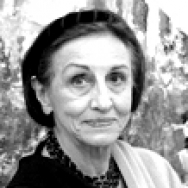
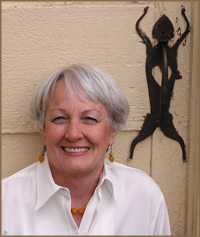
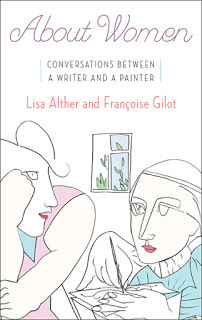
Recently, the Sunday New York Times Magazine ran an article about the plight of women directors, how their stories are not being told, or are not giving as much weight as the stories men might tell. So I was delighted to see this book, About Women: Conversations Between a Writer and a Painter, by Lisa Alther and Francoise Gilot. Truly, these are stories that are fascinating, surprising, raw and honest.
Alther is the author of six novels -- Kinflicks, Original Sins, Other Women, Bedrock, Five Minutes in Heaven and Washed In The Blood as well as a memoir (Kinfolks), a narrative history on the Hatfield-McCoy feud (Blood Feud) and a short story collection (Stormy Weather And Other Stories). Three of these were Book-of-the-Month Club selections, and four were New York Times bestsellers. Her books have been translated into 17 other languages and have appeared on bestseller lists worldwide. A novella entitled Birdman of the Dancer, based on a series of monotypes by the French artist Francoise Gilot, has been published in Holland, Denmark and Germany.
Francoise Gilot is the author of Life with Picasso and is an extraordinarily talented and critically acclaimed painter. Her book Life with Picasso sold over a million copies. She has been friends with Alther for 25 years.
In their conversations, they cover everything from their own oral histories to fashion, sex, love and art--it's exhilarating and important to hear their voices. I'm honored to host them both here. Thank you Lisa and Francoise.
What made you decide to turn your private conversations public?
The conversations that make up ABOUT WOMEN are very distinct from our usual private conversations. They began when Lisa was living in Paris researching a novel set partly in France. Francoise was trying to explain to her French attitudes toward women, feminism and fashion. Lisa found what Francoise was saying so intriguing that she began to tape it. We selected a certain number of pertinent chapter titles – The Little Black Dress, Ceremonies in White, The Virginia Club, etc. – and used them to structure our discussions. So we had a definite creative goal right from the start – though no particular intention of publication. Doing the project was the point, not what might become of it afterwards.
How did you choose what to reveal and what to keep hidden?
Within the confines of our chapters, we kept nothing hidden because we didn’t know exactly what we were trying to say. The conversations were a process of discovery. As we talked, we uncovered aspects to the issues that were new to us. So we added material and organized it in order to clarify our evolving perceptions. Repetitions were the only thing we eliminated. But because we had both practiced our crafts for so many years, we usually knew in advance how not to include irrelevancies. Even though we work in different fields, we found that many characteristics of our creative processes are similar.
We had experienced this kind of artistic dialogue before: Lisa had watched Francoise create monotypes on a lithographic press in Soho. As the monotypes emerged, Lisa invented a story based on them. Upon reading it, Francoise was quite astonished to discover her own hijacked characters starring in a plot very different from the one she’d been telling herself as she composed the monotypes. We titled this story BIRDMAN AND THE DANCER, and it was published in Germany, Holland, and Denmark, using some of the monotypes as illustrations.
Looking back at your prior conversations, have your feelings changed about anything you discussed?
Our feelings about what we said were valid when we said them. But everything on earth either disintegrates or evolves. So no doubt some of our feelings have already shifted, but these shifts aren’t evident to us at the moment because the book is so recently completed.
Did anything from your pasts surprise you?
Nothing about the actual memories surprised us, but the added meaning those memories acquired when juxtaposed to the other’s memories was indeed sometimes surprising. For instance, Francoise described a white dress in which she was supposed to meet the Pope as a small child, and about spilling ink on it beforehand with the hope that she could avoid this meeting, no doubt already questioning the religion in which she was being raised. This triggered Lisa’s memory of diving into a swimming pool on the afternoon of her wedding, ruining her hairdo. She had previously recounted that episode as merely a humorous anecdote, but in the light of Francoise’s moment of rebellion against the Pope, Lisa’s plunge into the pool took on new meaning for her: She realized that she had perhaps been rebelling against the notion of marriage in the only way left to her at that point, by ruining her wedding bouffant.
Francoise refers to this process of each seeing the episodes of her life reflected in and refracted by similar episodes from the other’s life as our serving as “parallel mirrors” for one another. Moments take on new meanings once you realize that they are not isolated individual acts but are, rather, symbolic ones, shared in different manifestations by others.
What was it like working on this book together? I imagine looking back on all those years of friendship cemented your bond even more?
The most important thing to be said is that working on this book was great fun for both of us. Otherwise, we wouldn’t have done it! We discovered that we share a natural kinship in terms of our art. Our process is very similar, as are our aims. We are both searching for truths about our lives, and we regard our creative work as a pathway to such discoveries.
People often ask how we became friends, since we represent different generations and dissimilar backgrounds. Each person meets many thousands of people during a lifetime, yet we become close friends with only a handful. Why do we pick the ones we do? Why do they pick us? Such affinities are one of life’s great mysteries. The only answer seems to be what the French essayist Montaigne said about his friend, the poet La Boetie: “If a man should importune me to give a reason why I loved him, I find it could no otherwise be expressed, than by making answer: Because it was he, because it was I.”
What I admired most about the book was the honesty, the way there was really nothing you both would not talk about. Or was there?
Well, of course it’s impossible to talk about everything on earth! And we did have a structure that delineated our areas of conversation. We started with the theme of black and white – The Little Black Dress, Ceremonies in White – and we also ended with the theme of black and white – the Middle Path and the need in life and in art to tread the narrow line between darkness and light.
But we are both quite direct and not overburdened by a desire to please, so there’s probably very little we wouldn’t be willing to discuss, even outside the confines of this book. Since we’ve both studied eastern spirituality, we’ve learned how to set our egos aside during the creative act – and some of that probably carries over into our interactions with other people, such that both of us usually enjoy hearing about and commenting on the concerns and behavior of others, however bizarre.
What is obsessing you now and why?
Francoise is concerned with how to conclude her long career as a painter and what she wants her final word on that to be.
Lisa has started her seventh novel and is preparing to return to it, unless we decide to do a sequel to ABOUT WOMEN.
What question didn’t I ask that I should have?
Francoise suggests, “What is joy?”
Published on November 23, 2015 18:04
November 22, 2015
Holiday book-giving season is coming, and with that in mind, the fabulous Sloane Crosley talks about her incredible novel, The Clasp, a family of rabbits, being the kind of writer who eats peanut brittle for breakfast and so much more
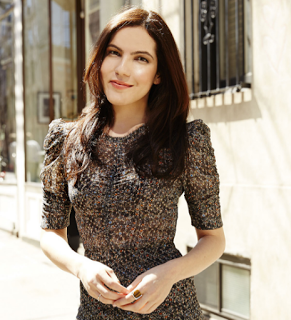
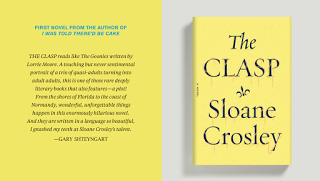
I am deeply mortified. I read The Clasp in galleys and loved it so much I tracked Sloane Crosley down and begged her to be on the blog. She graciously agreed, as long as it would be easy, and she answered all my questions almost immediately. And what did I do? I lined this up to appear in October, and it never showed. So with deep apologies (Please forgive me, Sloane,) I'm headlining your book today--and it's wonderful and funny and gorgeously written and by the way, it makes the PERFECT holiday gift for everyone.
Sloane has a pedigree. She is the author of The New York Times bestselling essay collections, I Was Told There’d Be Cake , How Did You Get This Number and the e-book Up The Down Volcano She is featured in The 50 Funniest American Writers: An Anthology of Humor from Mark Twain to The Onion and The Best American Nonrequired Reading . I Was Told There’d Be Cake was a finalist for The Thurber Prize for American Humor.
Prior to writing full time, Sloane spent twelve years working in book publishing and was the Deputy Director of Publicity at Vintage/Anchor Books. She currently serves on the board of Housingworks Used Bookstore and is a co-chair of The Young Lions Committee at The New York Public Library, where she once interviewed Joan Didion on stage. She remains nervous about it.
The Clasp is a wonderful novel about three friends and one famous story, "The Necklace," and you need to buy it and read it immediately. Thank you, Sloane. Please don't hate me. I'll buy you cookies.
So, I’ve read and adored your past nonfiction, and I read and adored your first fiction. But I have to ask, was it scary to move into fiction? Did you consider your essay collections, which are fabulous, as stepping stones into a novel, or did the idea of writing a novel just strike you? Did you have doubts, and if so, how did you stomp them out?
Thank you! It’s so nice to hear all these compliments embedded in your questions. It was on-and-off scary. Though my litmus test for knowing that I had lost perspective was to pick up a novel at random from my bookshelf —oh, say, Lolita or Lost Souls or The Sports Writer or The Emperor’s Children — and if I started reading the first pages and thought, “what is the point of this?” I knew I was just down on the whole concept of fiction and had to walk away for the day. I don’t consider the essays stepping stones. I would never step on them, at least not with my shoes on. However, I have always wanted to write fiction and always have written fiction (I just haven’t published it until now). It’s a different muscle most of the time. So I wasn’t strengthening my arms (the essays) in the hopes of becoming a faster runner (the novel). The one thing that is the same is the doubts. But I think you have to have some of them to be a good writer. In all corners of life, I am dubious of people who claim to have no problems.
I always think that novelists write about the things that haunt them personally, hoping that the writing will lead to some answers to some particular questions. Was this the case for you? And if not, what DID spark the writing of this novel?
There’s a piece of that. I think you have to find the balance between wanting to answer a question for yourself and wanting to entertain the reader. Too much of the former leads to self-indulgent fiction and too much of the latter leads to soulless fiction. Several things sparked the writing of this novel, some big (exploring this love triangle, wanting to create an opportunity for characters who were feeling a life/work inertia to go on an adventure) and some small (seeing a sketch of a necklace in an old book, rereading Guy de Maupassant’s “The Necklace” and finding myself and my character in it).
What kind of fiction writer are you? Did you map this story out or just trust in that pesky muse? Did you have rituals for writing, bribes for yourself to finish a chapter?
I’m the kind of fiction writer who will eat peanut brittle for breakfast. I’m the kind of fiction writer who watches as much television as she reads books. I’m the kind of fiction writer who gets obsessive about certain authors. I’m the kind of fiction writer who packs ten pairs of underwear for a three day trip. As for rules, I wouldn’t write less than 700 words a day. I’m not saying I wrote everyday for five years. But when I did write, I buckled in.
The Clasp is so witty (you have a gimlet eye), the characters so real, and the situations so funny, but what I really loved was the sense of these three friends finding the beauty in reconnecting in a strong and important way. Can you talk about this?
Thank you. I think of them as having relatable and yet pretty unique friendships. For example, there’s a kind of person in these large friend groups who tends to be a bit oversensitive and for whom nothing ever seems to work out and he’s one of my three main characters. Often that person is left out or shunned but that’s not Victor. He’s this specific type who’s still in the mix. I also think there’s something beautiful in what I’ll call calcifying dramas. Time hasn’t healed any of their wounds but it’s just deepened them in a way that these characters are accustomed to. They are accustomed to the old roles they fall back into and there is a strange sort of love that develops. There’s a point late in the novel when Kezia wonders aloud if they are all friends just because they had been smart and stupid in equal measure when they were teenagers and that had landed them at the same college. But, hopefully, by the time a reader gets to that scene, she will know more than the characters know and see how untrue that is. There’s real love between these people, snide as they can be with each other.
So tell us about that first novel about a family of rabbits…
Ah, when I was little I was diagnosed with a spatial learning disability and my parents became a bit overprotective of me, academically. So I wrote a story about a family of rabbits who bring the baby rabbit carrots. Then one day the family gets shot and the baby rabbit starves because he doesn’t know how to fend for himself. Why the rabbit was a boy rabbit is just as much of a mystery to me now as why I created a metaphor where my whole family ceases to exist. I mean, they’re nice people.
What’s obsessing you now and why? Endangered species. What’s not to obsess about?
What question didn’t I ask that I should have? There are tons of questions left to be asked! So I will just provide a bunch of random answers instead: Leo. Istanbul. Lily of the valley. The Once and Future King. My mother. Archaeologist. The violin. Knives. Old book smell. A taxidermied chicken I’ve named Horatio.
Published on November 22, 2015 18:30

